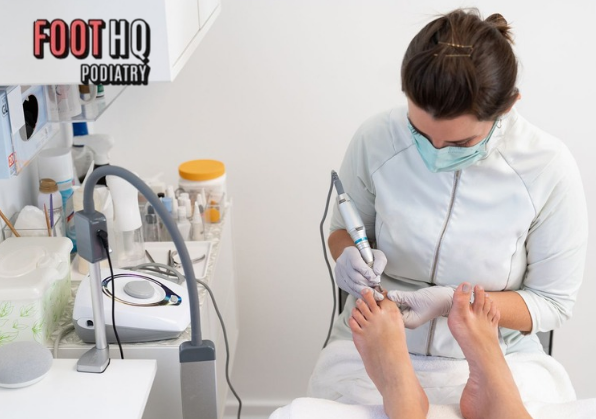Noticing a lump or bump on your foot can be concerning, especially if it causes pain, swelling, or difficulty walking. While some lumps may be harmless, others can indicate an underlying issue that requires professional attention. In this blog post, we’ll explore the common causes of foot lumps, when to seek treatment, and how a podiatrist can help you get back on your feet — pain-free.
What Causes Lumps or Bumps on the Foot?
There are many reasons a lump may appear on your foot. These can range from soft tissue growths to bone-related issues, infections, or inflammation.
Common Causes Include:
1. Ganglion Cysts
These fluid-filled sacs typically develop near joints or tendons and often feel soft and squishy. They’re usually painless but can become uncomfortable if they press on nerves or footwear.
2. Bunions
A bony bump forming on the side of the big toe joint, a bunion often causes pain, inflammation, and difficulty wearing certain shoes. Bunions can worsen over time if left untreated.
3. Plantar Fibromas
These firm, fibrous nodules develop in the arch of the foot, embedded within the plantar fascia (the thick ligament on the sole). While often painless, they can cause discomfort when walking or standing for long periods.
4. Corns and Calluses
Though not technically lumps, these thickened skin areas can feel like bumps and develop in response to pressure or friction. They’re often seen over bony areas or on the bottom of the foot.
5. Bone Spurs
These are bony projections that form over time due to pressure, arthritis, or joint damage. They commonly appear on the heel (heel spurs) or near joints and may cause pain or inflammation.
6. Lipomas
A lipoma is a soft, fatty lump that forms beneath the skin. These are typically harmless and slow-growing but can be removed if they cause discomfort.
7. Warts (Plantar Warts)
Caused by the human papillomavirus (HPV), plantar warts can appear as raised or flat lumps on the soles of the feet and may have small black dots. They are often tender when pressure is applied.
When Should You Be Concerned?
Not all foot lumps require urgent medical attention, but you should consult a podiatrist if you notice any of the following:
-
The lump is growing rapidly
-
It’s painful, red, or warm to the touch
-
You have difficulty walking or wearing shoes
-
The skin over the lump is discoloured or ulcerated
-
You have a history of foot injuries or diabetes
Persistent or painful lumps could be signs of more serious issues like infections, joint disorders, or, in rare cases, tumours. Early diagnosis is key to effective treatment.
How Are Foot Lumps Treated?
Treatment depends on the type and cause of the lump. Your podiatrist will assess the area, often using physical examination and imaging (such as ultrasound or X-ray) to determine the underlying problem.
Possible treatment options include:
-
Footwear modifications or padding to reduce pressure
-
Orthotics to offload the area
-
Cryotherapy for warts
-
Corticosteroid injections to reduce inflammation
-
Surgical removal in cases of persistent cysts, fibromas, or bunions
-
Referral for further imaging or specialist care if necessary
Your podiatrist will tailor a treatment plan based on your diagnosis, foot structure, and daily activities.
Can You Prevent Foot Lumps?
While not all foot lumps can be prevented, there are a few steps you can take to reduce your risk:
-
Wear well-fitting, supportive shoes that don’t compress your toes or heels
-
Avoid prolonged pressure or repetitive strain on certain areas of your feet
-
Maintain good foot hygiene and treat any cuts or infections promptly
-
Use orthotics if you have abnormal foot mechanics or a history of bunions or plantar fasciitis
-
Check your feet regularly, especially if you have diabetes or poor circulation
Final Thoughts
A lump or bump on your foot may be harmless, but it can also be a sign of something more serious. Whether it’s a cyst, bunion, wart, or something else, it’s best not to ignore any new or unusual growths. Early assessment by a podiatrist can help determine the cause and get you started on the right treatment — before it worsens or becomes more painful.
Book an Appointment with HQ Podiatry
If you’ve discovered a lump or bump on your foot, don’t wait. Let the experts at HQ Podiatry provide a thorough assessment and personalised care plan.
📍 HQ Podiatry
Suite 1, 28–30 Urunga Parade, Miranda NSW 2228
📞 Call us on (02) 8520 8818 to book an appointment today.
🌐 Visit us online at www.hqpodiatry.com.au
We’re here to keep your feet healthy, comfortable, and pain-free — every step of the way.







Share: